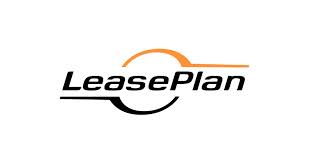Concept and Definition of Lease
Lease is a contract between the owner and the user of assets for a certain time period during which the second party uses an asset in exchange of making periodic rental payments to the first party without purchasing it. Under lease financing, the lessee regularly pays the fixed lease rent over a period of time at the beginning or at the end of a month, 3 months, 6 months or a year. At the end of the lease contract the asset reverts to the real owner.
However, in case of long-term lease contracts, the lessee is generally given the option to buy the leased asset or renew the lease contract. The three major types of leases are the operating lease, financial/capital lease and the direct financing lease. The operating lease is a short-term lease contract where the lessor bears all operating and repairing costs of the asset and the lessee pays periodic rental payments to the lessor, and where the lease is cancelable, and there is no bargain purchase option. Financial/capital lease is a long-term lease contract where the lessee bears all operating, repairing and maintenance costs, and makes periodic rental payments to the lessor. The lease is not cancelable and the lessee has the option for bargain purchase or renewal of lease contract at the end of the original lease period. In a direct financing lease, the lessor leases the asset by manufacturing or by purchasing from the manufacturer to the lessee directly and the lessee makes regular rental payments to the lessor. The lessor holds the ownership of the asset until the end of the lease period and the lessee holds the possession of the asset. In addition to these major types, there are some other types of lease such as sale and lease and leveraged lease.
Legally, others define a leasing company as one having the business of hiring plants or equipment or of financing their hire. The International Finance Corporation promotes leasing as a method of financing industrial development in the developing countries as a part of its Capital Market development strategies.
A “financial lease” is defined as a transaction in which the lessor purchases leased property selected by the lessee; the lessee has the right to possession and use of the leased property in exchange for payment of rent; and upon expiration of the lease, the lessee may renew the lease, exercise an option to buy the leased property or return it to the lessor. Or
“An agreement where the leaser receives lease payments to cover its ownership cost. The lessee is responsible for maintenance, insurance, and taxes. Some finance leases are conditional sales or hire purchase agreements”.
Researchers have examined the features of leasing from economic, legal, fiscal and accounting angles. While no universally accepted definition can be said to have evolved, various bodies have formulated their own definition of the word. The European Leasing Association, the association of leasing companies in Europe, defines leasing as:
“A contract between a lessor and a lessee, for the hire of a specific asset, selected from a manufacturer or vendor of such asset by the lessee. The lessee has possession and use of the asset on payment of specified rentals over a period.”
Legally, others define a leasing company as one, having the business of hiring plants or equipment or of financing their hire. The International Finance Corporation promotes leasing as a method of financing industrial development in the developing countries as a part of its Capital Market development strategies.
Under lease financing, the lessee regularly pays the fixed lease rent over a period of time at the beginning or at the end of a month, 3 months, 6 months or a year. At the end of the lease contract the asset reverts to the real owner. However, in case of long-term lease contracts, the lessee is generally given the option to buy the leased asset or renew the lease contract.
Where as Leasing, one of the financing techniques, allows a company to use some of its operating fixed assets (i.e. buildings, plant and other fixed assets) under a rental system. In certain cases, the company may purchase the asset at the end of the contract for a pre-determined and usually very low amount. A leasing transaction is called a lease.
In accordance with the Law, financial leasing is a form of investment activity, in which a lessor is obligated to transfer a leased asset acquired from a supplier, held in ownership by the lessor, and agreed upon with the lessee, to a lessee for an agreed upon fee and terms for temporary use and possession for commercial purposes for a period of no less than three years. The transfer of the lease asset in the lease agreement must meet at least one of these \ following conditions:
- The transfer of the leased asset to the lessee’s ownership and/or the lessee’s right to acquire the leased asset at a fixed price are stipulated by the lease agreement;
- The term of the lease agreement shall exceed 75% of the useful life of the leased asset;
- The current (discounted) amount of the lease payments over the length of the lease agreement shall exceed 90% of the price of the transferred leased asset.
Legal Framework for Leasing
The leased asset may be any non-consumable good, including companies, property complexes, building and structures, equipment, transportation, land, and other movable and unmovable property. Leased assets cannot be natural resources, and property barred or restricted from general public circulation.
The parties to a lease (lessor, lessee, and supplier) may be any legal entity or physical person:
- Physical persons operating as lessors or lessees must have the status of a certified sole proprietor; and,
- Suppliers may be any physical person.
Subleasing
Subleasing is a form of subhire of the leased asset in which:
- The lessee has the right, with written permission of the lessor, to sublease the leased asset, received through a lease agreement, to a third party for the temporary possession and usage on the basis of a sublease;
- The sub lessor and the sub lessee act in this relationship as the lessor and the lessee, and have the same rights and obligations accorded in the civil legislation for these parties to the lease;
- The period of the sublease cannot be longer than the original lease agreement; and,
- If the original lease agreement is terminated, the sublease agreement is automatically terminated, if this point is not otherwise addressed in the lease agreement.
Rights and Obligations of the Parties to a Lease
Leasing legislations throughout the region create a clear balance of rights and obligations for each party to the lease, equally defending the interests of each party. A progressive aspect of the legislation is that the norms in the legislation are based on imperative law, which means that even though the legislation contains concrete principles of behavior that must be observed; at the same time, the parties to the lease also must have the right to decide upon the extent of their rights and obligations, observing the concept of freedom of contract.
- The lessor is not accountable to the lessee for the non-fulfillment of the sale-purchase contract, except for those cases in which the selection of the supplier and the leased asset was conducted by the lessor, as well as in cases when non-fulfillment of the sale-purchase contact was the result of the wrongful acts (omissions) of the lessor.
- The lessee has the right to address all the claims which stem from the sale-purchase contract directly to the supplier even though the lessee is not the party to that contract. As a result, the legislation imposes an obligation on the lessor to notify the Supplier about the purpose of purchasing an asset for lease
Insurance
Insurance of the leased asset against all potential detriments attributed to the risk of incidental loss, deprivation, larceny, damage or premature wear and tear is voluntary and is decided through agreement of the parties. Agreement on insurance can take the following terms:
- Which party to the lessee will be the insurer, and who will pay for the insurance premiums:
- Will the insurance premiums compensate which party?
- Which insurance company will be used and who will select the insurance company?
- Who will receive compensation from the insurance company, and how will this compensation be used?
Secondary Leasing
The Law on Financial Leasing has introduced the concept of a secondary lease or a secondary transfer of the leased asset to another lessee following the end or termination of the initial lease agreement.
In this way, the law allows for the return of the leased asset to the lessor, and in the case of repossession following default, the subsequent transfer of the returned leased asset to a new lessee.
The law furthermore states that in the case of secondary leasing , the lessor is obligated to inform the supplier in written form that the leased asset has been transferred to a new lessee for use and possession within one month after the transfer. In the case of a secondary lease, the lessor is considered the party, which selected the supplier and the leased asset.
Lease Payments
The law defines lease payments as periodic payments that include the total amount of the payments stipulated in the lease agreement over the entire period of the agreement. Lease payments must be calculated subject to full or partial repayment of the cost of the leased asset, based on its value at the moment of lease agreement execution. The lease payments must be paid during the term of the lease agreement and include:
- Reimbursement to the lessor for expenses incurred through the acquisition of the leased asset and other expenses affiliated with the acquisition, delivery, and installation of the leased asset for its use as defined in the lease agreement; and,
- Fees for the provision of the lease.
Repossession of the Leased Asset
Interviews with lessors indicated that repossession of leased assets through the court system has operated fairly efficiently. However, court decisions are not always provided in a desirable time length that meet the needs of the lessor as inactive leased assets and unpaid lease payments could quickly result in losses to the lessor. For this reason, Kazakhstan has also implemented non-court mechanisms to repossess the leased asset.
The Law on Financial Leasing allows for the right of non-disputed repossession of the leased asset on the basis of court order for use in those cases in which the lessee admits fault but does not return the leased asset.
To take advantage of the court order proceedings, the lessor must officially submit a claim to the court, which within three days issues a court order, a copy of which is sent to the lessee. The lessee has the right within 10 days to submit its objections to the court. If the lessee files an objection, the court must cancel the court order as the court order proceedings can only be used on the basis of non-disputed demands.
If within the 10-day period, the lessee does not submit any objections, the court order is executed and enforced in the manner prescribed, and the lessor can repossess the leased asset based upon the court order.
This repossession procedure provides the lessor an alternative and more effective method to defends its interests.
Term Uses in Leasing
Lessor
The lessor’s business license must have a scope of business that includes financial leasing operations.
Lessee
The “lessee” is defined as any natural person or enterprise/company that enters into a financial leasing contract with the lessor to obtain funds to finance the acquisition of the leased property, and to obtain the right of possession and usage by paying the rent on the agreed terms.
Leased Property
The “leased property” is defined as any real property and movable durable property (including the accessory technologies), other than natural resources. Examples include (i) equipment, machinery and instruments; and (ii) vehicle, vessels, aircraft and space shuttles. The Outline does not distinguish between commercial and consumer leases, although other consumer protection laws are also under consideration. These laws could affect financial leases with consumers.
Registration of Leased Property
Leased property (other than real property, aircraft, vessels and motor vehicles) must be registered at the State Administration of Industry and Commerce, the government authority in charge of registration of mortgage or security interests of movable assets, or with any industry association authorized thereby. Such registration is needed to protect the parties’ interests against bona fide purchasers or creditors
Nature of the Rights to Leased Property
The financially leased property is excluded from the bankruptcy estate of the lessee. If the lessee fails or delays in making a rental payment, the lessor may terminate the contract and repossess the leased property.
Term
In general, the financial lease term should be shorter than the permissible period for depreciation for the leased property, but in no event less than 20% of the depreciation period.
Rent
The financial lease rent shall be determined by the cost of the leased property, plus the reasonable profit of the lessor, unless otherwise agreed by the parties.
Acceleration and Repossession
If the cumulative past-due rent is more than one-fifth of the rent under the financial lease or the number of defaults in making the rental payments exceeds one-fifth of the total number of the rental payments, the lessor may demand immediate payment of all the rental payments or terminate the financial lease repossess the leased property and recover damages including expenses. However, the total amount of the compensation cannot exceed one-fifth of the total rent under the financial lease .The lessee may not prevent the lessor from exercising its right of repossession or resist the lessor in this regard.
Risk Assumption
When the lessee possesses the leased property, unless otherwise agreed upon by the parties, any damages, losses and risks to the leased property shall be the sole responsibility of the lessee.
Conditions for Setting Up Financial lease Companies.
- Minimum registered capital of RMB 80,000,000 (equivalent to slightly less than USD 10,000,000)
- Required management team with professional knowledge of financial leasing and the law
- Adequate organization, management, internal management systems and systems for risk control and handling
- Business premise, safety measures and other required facilities corresponding to the business operation
Regulatory Requirements for a Financial Leasing Operation
- Assets/Debt Ratio.
- Risk assets, including contingent liabilities, shall not exceed ten times the total assets
- Investment in industries other than the financial lease industry cannot exceed 30% of the total assets
- The leased assets under the financial lease and other financial leases cannot be less than 60% of the total assets
- Management of Leased Property. The leasing company shall set up separate accounts for leased property under sublease and entrusted b lease business.
- Cost Control for Leased-Back Property. In a sale-and- lease -back transaction, the acquisition cost for the leased property shall not exceed 20% of the actual value or the book value of the leased property.
Incentives for Financial Leasing
- Tax Incentives and Accelerated Depreciation.
- Any tax incentives and holidays applicable to manufacturers apply to the lessor or lessee that is eligible to record the leased property on its books as fixed assets for depreciation.
- Accelerated depreciation is permitted, provided that depreciation period is not shorter than three years.
- Special Reserve. Reserve for uncollectable accounts is permitted for the leasing companies.
- Source of Funding. A leasing company, after its establishment has been approved, may finance its operation through public equity offerings or issuance of corporate bonds.
- Special Treatment for Purchase and Leaseback. The sale/purchase in a purchase and leaseback transaction is not considered as a true purchase; therefore, relevant taxes and fees imposed on sales/purchases will not be imposed.
















